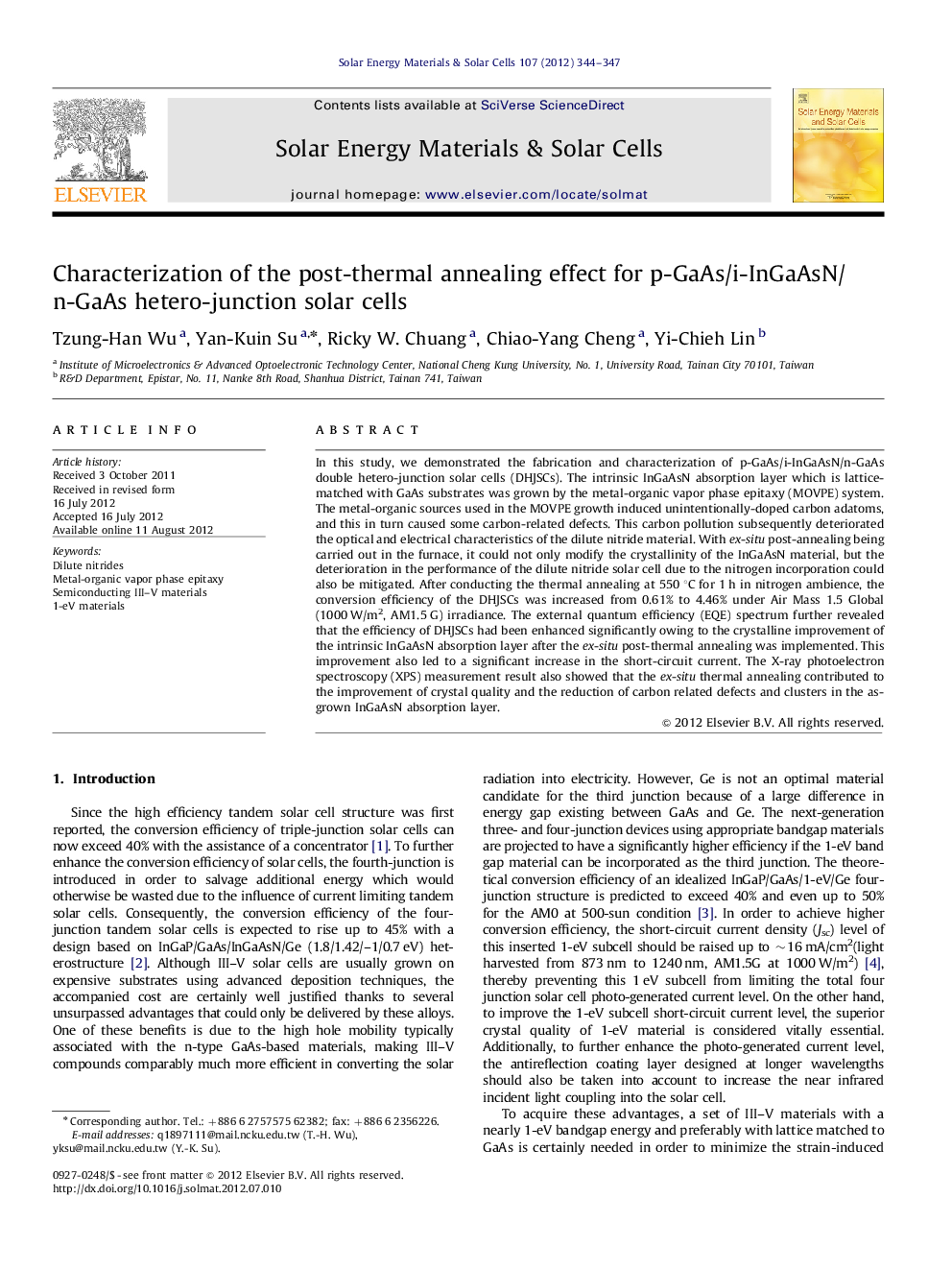| Article ID | Journal | Published Year | Pages | File Type |
|---|---|---|---|---|
| 78929 | Solar Energy Materials and Solar Cells | 2012 | 4 Pages |
In this study, we demonstrated the fabrication and characterization of p-GaAs/i-InGaAsN/n-GaAs double hetero-junction solar cells (DHJSCs). The intrinsic InGaAsN absorption layer which is lattice-matched with GaAs substrates was grown by the metal-organic vapor phase epitaxy (MOVPE) system. The metal-organic sources used in the MOVPE growth induced unintentionally-doped carbon adatoms, and this in turn caused some carbon-related defects. This carbon pollution subsequently deteriorated the optical and electrical characteristics of the dilute nitride material. With ex-situ post-annealing being carried out in the furnace, it could not only modify the crystallinity of the InGaAsN material, but the deterioration in the performance of the dilute nitride solar cell due to the nitrogen incorporation could also be mitigated. After conducting the thermal annealing at 550 °C for 1 h in nitrogen ambience, the conversion efficiency of the DHJSCs was increased from 0.61% to 4.46% under Air Mass 1.5 Global (1000 W/m2, AM1.5 G) irradiance. The external quantum efficiency (EQE) spectrum further revealed that the efficiency of DHJSCs had been enhanced significantly owing to the crystalline improvement of the intrinsic InGaAsN absorption layer after the ex-situ post-thermal annealing was implemented. This improvement also led to a significant increase in the short-circuit current. The X-ray photoelectron spectroscopy (XPS) measurement result also showed that the ex-situ thermal annealing contributed to the improvement of crystal quality and the reduction of carbon related defects and clusters in the as-grown InGaAsN absorption layer.
